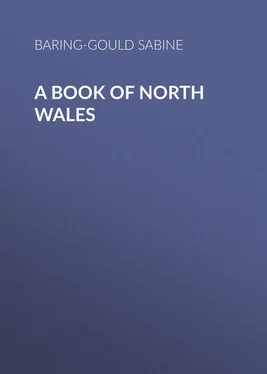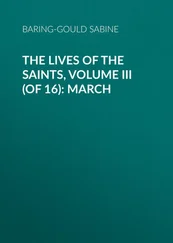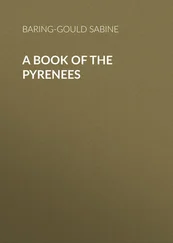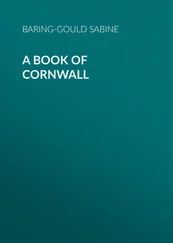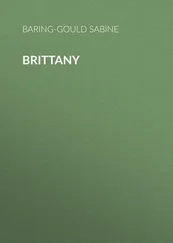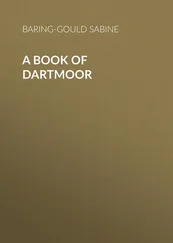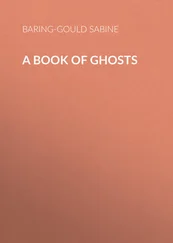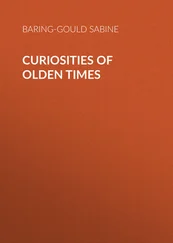Sabine Baring-Gould - A Book of North Wales
Здесь есть возможность читать онлайн «Sabine Baring-Gould - A Book of North Wales» — ознакомительный отрывок электронной книги совершенно бесплатно, а после прочтения отрывка купить полную версию. В некоторых случаях можно слушать аудио, скачать через торрент в формате fb2 и присутствует краткое содержание. Жанр: foreign_antique, foreign_prose, на английском языке. Описание произведения, (предисловие) а так же отзывы посетителей доступны на портале библиотеки ЛибКат.
- Название:A Book of North Wales
- Автор:
- Жанр:
- Год:неизвестен
- ISBN:нет данных
- Рейтинг книги:4 / 5. Голосов: 1
-
Избранное:Добавить в избранное
- Отзывы:
-
Ваша оценка:
- 80
- 1
- 2
- 3
- 4
- 5
A Book of North Wales: краткое содержание, описание и аннотация
Предлагаем к чтению аннотацию, описание, краткое содержание или предисловие (зависит от того, что написал сам автор книги «A Book of North Wales»). Если вы не нашли необходимую информацию о книге — напишите в комментариях, мы постараемся отыскать её.
A Book of North Wales — читать онлайн ознакомительный отрывок
Ниже представлен текст книги, разбитый по страницам. Система сохранения места последней прочитанной страницы, позволяет с удобством читать онлайн бесплатно книгу «A Book of North Wales», без необходимости каждый раз заново искать на чём Вы остановились. Поставьте закладку, и сможете в любой момент перейти на страницу, на которой закончили чтение.
Интервал:
Закладка:
Sabine Baring-Gould
A Book of North Wales
PREFACE
CONCERNING the purpose and scope of this little book I have but to repeat what I have said in the prefaces to my other works of the same nature — A Book of the West , A Book of Dartmoor , A Book of Brittany – that it is not intended as a Guide, but merely as an introduction to North Wales, for the use of intending visitors, that they may know something of the history of that delightful land they are about to see.
Welsh history is a puzzle to most Englishmen; accordingly I have made an attempt to simplify it sufficiently for the visitor to grasp its outlines. Without a knowledge of the history of a country in which one travels more than half its interest is lost.
I have to return my warmest thanks to kind friends who have helped me with information, notably the Rev. J. Fisher, B.D., of Cefn, S. Asaph; Mr. J. E. Griffith, of Bryn Dinas, Bangor; the Rev. E. Evans, of Llansadwrn; Mr. C. H. Jones, of the Public Library, Welshpool; Mr. A. Foulkes-Roberts, of Denbigh; Mr. D. R. Daniel, of Four Crosses, Chwilog; and Mr. R. Williams, of Celynog, Newtown. I am also much indebted to Mr. R. J. Lloyd Price, of Rhiwlas, for kindly allowing me to reproduce the portrait of Catherine of Berain in his possession; and to Mr. Prys-Jones, of Bryn-Tegid, Pontypridd, for sending me a photograph of the painting. But, indeed, everywhere in Wales I have met with general kindness and hospitality; and if I have failed to interest readers in the country and people the fault is all mine. It is a glorious country, and its people delightful.
S. BARING-GOULDLew Trenchard, N. Devon
May 17th, 1903
CHAPTER I
THE WELSH PEOPLE
IT cannot be said that the Welsh have any very marked external characteristics to distinguish them from the English. But there is certainly among them a greater prevalence of dark hair and eyes, and they are smaller in build. This is due to the Iberian blood flowing in the stock which occupied the mountain land from a time before history began, at least in these isles. It is a stock so enduring, that although successive waves of conquest and migration have passed over the land, and there has been an immense infiltration of foreign blood, yet it asserts itself as one of predominant and indestructible vitality.
Moreover, although the language is Celtic, that is to say, the vocabulary is so, yet the grammar reveals the fact that it is an acquired tongue. It is a comparatively easy matter for a subjugated people to adopt the language of its masters, so far as to accept the words they employ, but it is another matter altogether to acquire their construction of sentences. The primeval population belonged to what is called the Hamitic stock, represented by ancient Egyptian and modern Berber. This people at a vastly remote period spread over all Western Europe, and it forms the subsoil of the French nation at the present day.
The constant relations that existed between the Hebrews and the Egyptians had the effect of carrying into the language of the former a number of Hamitic words. Moreover, the Sons of Israel were brought into daily contact with races of the same stock on their confines in Gilead and Moab, and the consequence is that sundry words of this race are found in both Hebrew and Welsh. This was noticed by the Welsh scholar Dr. John Davies, of Mallwyd, who in 1621 drew up a Welsh Grammar, and it is repeated by Thomas Richards in his Welsh-English Dictionary in 1753. He says: “It hath been observed, that our Language hath not a great many Marks of the original Simplicity of the Hebrew, but that a vast Number of Words are found therein, that either exactly agree with, or may be very naturally derived from, that Mother-language of Mankind.”
The fact is that these words, common to both, belong radically to neither, but are borrowed from the tongue of the Hamitic people.
This original people, which for convenience we will call Iberian, migrated at some unknown period from Asia, and swept round Europe, whilst a second branch colonised the Nile basin and Northern Africa, and a third streamed east and occupied China and Japan.
The master idea in the religion of this people was the cult of ancestors, and the rude stone monuments, menhirs, cromlechs, and kistvaens they have left everywhere, where they have been, all refer to commemoration of the sacred dead. The obelisk in Egypt is the highly refined menhir, and the elaborate, ornamented tombs of the Nile valley are the expression of the same veneration for the dead, and belief in the after life connected with the tomb, that are revealed in the construction of the dolmen and kistvaen.
This same people occupied Ireland. It was a dusky, short-statured race, with long heads, and was mild and unwarlike in character.
Then came rushing from the East great hordes of fair-haired, round-headed men, with blue eyes. Their original homes were perhaps the Alps, but more probably Siberia. This new race was the Celt. It was divided into two branches, the Goidels and the Brythons, and the Goidels came first. Considerable difference as well as affinity exists between the dialects spoken by each. Where a Brython or Britton would speak of his head as “pen,” the Goidel or Gael would call it “ceann,” pronouncing the c hard, as k . So “five” in Manx is “queig,” but in Welsh “pump.” A like difference was found in Italy, where the Roman would name a man Quinctius (Fifth), but a Samnite would call him Pontius.
The Gael is now represented by the Irish, the Manx, and the Highlander: the Britton, so far as language goes, by the Welsh and Breton.
Where such names are found as Penmon in Anglesey, Pentire in Cornwall, Pen-y-gent in Yorkshire, there we know that the Britton lived long enough to give names to places. But where we find Kenmare, Kentire, Kinnoul, there we know that the Gael was at home.
Now we find it asserted that the Goidels overran Wales before they swept into Ireland, and that the Brittons penetrated as a wedge into Powys between two masses of Goidels.
But the place-names in North and South Wales are purely British, and not Gaelic. That the latter were at one time in both North and South Wales is indubitable, but they were not there long enough to stamp the mountains and rivers, the headlands and lakes, with names in their tongue. That was done by the Brittons who overflowed the whole of Wales from north to south.
Owing to the weakness of Britain, that had been in part Romanised, and which was ill-defended by a few legions, the island became a prey to invaders. It was fallen upon from all sides.
The Irish or Scots, as they were then called, poured down upon the western coast; the Picts broke over the wall from the north, and the Scandinavians and Germans invaded the east and north-east.
In 240 the Irish king Cormac MacAirt invaded Britain and assumed a nominal sovereignty over it. It was probably about this time that the Irish Gaels effected a lodgment on the coast of Wales and occupied Anglesey and all the northern fringe of the fair lands by the sea and the whole of Southern Wales.
That they were in the land we know, not only from the testimony of Welsh ancient writers, but from the number of inscribed stones they have left behind them, some with the Ogam script, bearing distinctly Irish names. All these inscribed stones belong to the period after the occupation from Ireland, and none go back to an earlier date, and give any grounds for supposing that the original population of North and South Wales were Gaels. The Scots or Irish held these parts till an event took place which led to their expulsion.
Читать дальшеИнтервал:
Закладка:
Похожие книги на «A Book of North Wales»
Представляем Вашему вниманию похожие книги на «A Book of North Wales» списком для выбора. Мы отобрали схожую по названию и смыслу литературу в надежде предоставить читателям больше вариантов отыскать новые, интересные, ещё непрочитанные произведения.
Обсуждение, отзывы о книге «A Book of North Wales» и просто собственные мнения читателей. Оставьте ваши комментарии, напишите, что Вы думаете о произведении, его смысле или главных героях. Укажите что конкретно понравилось, а что нет, и почему Вы так считаете.
